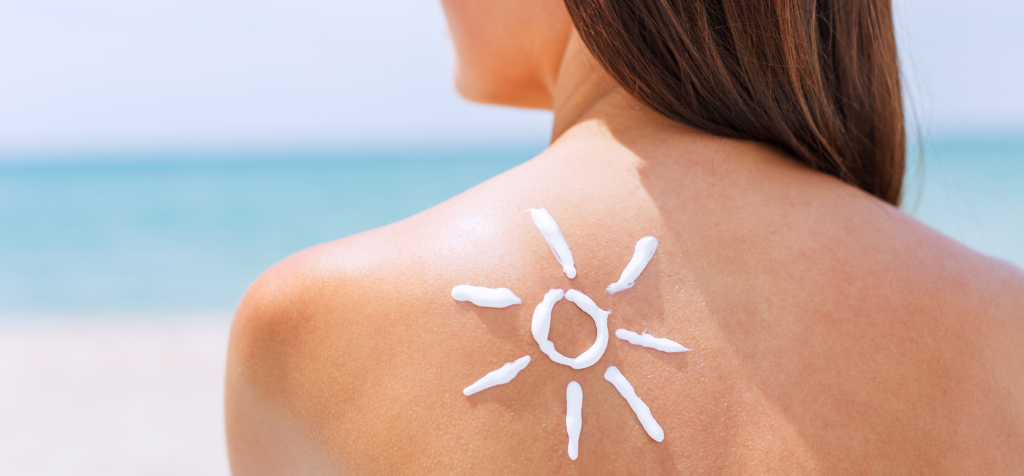Choosing a Safe, Non-Toxic Sunscreen For Summer

Despite its importance and role in protecting our skin and health, sunscreen also has the potential to be one of the most toxic things we use regularly. Sunscreen is meant to be used daily, so if you’re using products with toxins, you’re constantly exposing yourself to potentially harmful chemicals. This guide explores what to know and how to choose a non-toxic sunscreen for summer.
The Most Harmful Sunscreen Ingredients
The past few years have seen a growing number of troubling reports about ingredients some of the most popular sunscreen brands contain. These chemicals are absorbed directly into the user’s body and could lead to fertility problems, hormone disruption, and even cancer.
The U.S. FDA is working towards more regulation of the ingredients in sunscreen. The organization also independently researched sunscreens recently and found there are some primary ingredients of concern that, when applied to the skin, are absorbed by the body at much higher rates than what it considers safe.
These ingredients include:
- Oxybenzone: This commonly used ingredient has been found to pass into breastmilk, and after applying it just once, blood levels were more than 180 times what the FDA considers a concern. It’s a synthetic form of estrogen and a potential hormone disruptor. The ingredient is now banned in Hawaii because it harms coral reefs. Some researchers suspect that the presence of oxybenzone in sunscreen could be behind the rise in melanoma cases over the past few decades, but there’s no definitive evidence yet.
- Octinoxate: This ingredient, like oxybenzone, is banned in Hawaii. In animal studies, it’s been found to affect the thyroid and reproductive system negatively.
- Retinyl palmitate: It’s a type of vitamin A, but in animal studies, when you’re wearing it and your skin is exposed to the sun, it can be cancerous through the formation of free radicals.
- Avobenzone: This ingredient isn’t sun stable, so it has to be mixed with other chemicals and is also linked with high rates of skin irritation.
- Homosalate: The European Commission proposed a concentration limit of 1.4% for this ingredient, while in the U.S., sunscreen can have up to 15%. This is a hormone disruptor, and when exposed to the sun, it breaks down into potentially toxic byproducts.
- Nanoparticles: These materials are insoluble and can be hundreds of thousands of times smaller than human hair. They would react in the environment and the body differently than the same material if it weren’t a nanoparticle. For example, zinc oxide nanoparticles can cause development disorders in sea animals and may have negative effects on human health as well.
- Phthalates: These ingredients are often used for synthetic fragrances and can block male hormones, lowering testosterone levels.
Chemical vs. Mineral Sunscreen
When you’re looking for a nontoxic sunscreen, your two primary options are either chemical or mineral, and they provide sun protection differently from one another.
Mineral sunscreen is made with zinc oxide and titanium dioxide that sit on the skin’s surface rather than absorbing into it, preventing UV rays from penetrating your skin.
Chemical sunscreens let UV light absorb into your skin; once it does so, the chemicals create a reaction. The chemical reaction converts UV light to heat, which can then dissipate from your skin.
The pros of chemical sunscreens are that they’re easy to apply and don’t leave a layer of film on your skin. They might also protect you more from UV rays, but they often have the ingredients named above, and they can cause skin reactions, irritation, and other negative health effects.
The primary ingredients in mineral sunscreen are the only ingredients the FDA says are generally recognized as safe and effective. Unlike chemical sunscreens, they also offer you immediate sun protection.
Mineral sunscreens have more stable ingredients when exposed to sunlight and offer protection against UVA and UVB rays. This is known as broad-spectrum protection, and not every chemical sunscreen blocks both types of rays.
Tips for Choosing a Non-Toxic Sunscreen
One of the best things to do as you prepare for the summer sun is to look at the ingredients before choosing a sunscreen.
Since minerals are less toxic than chemical sunscreens, it’s a good choice, but take some time to experiment and find the formulation that works well for you.
Avoid sprays, which can be toxic in terms of what you’re inhaling, and don’t think that a product with a higher SPF value is necessarily better. There’s not much of a point in going with anything with an SPF of more than 50.
Finally, when using mineral sunscreens, be aware that you may have to reapply more often than you would with a chemical-based product.
Everything that has contact with your skin can influence your health. If you’d like to be proactive about safeguarding your health and choosing nontoxic ingredients, Crunchi Beauty has excellent options. We also encourage you to consider purification and detoxification therapy with Intuitive Health Restoration to assess and then reduce your toxic load.
